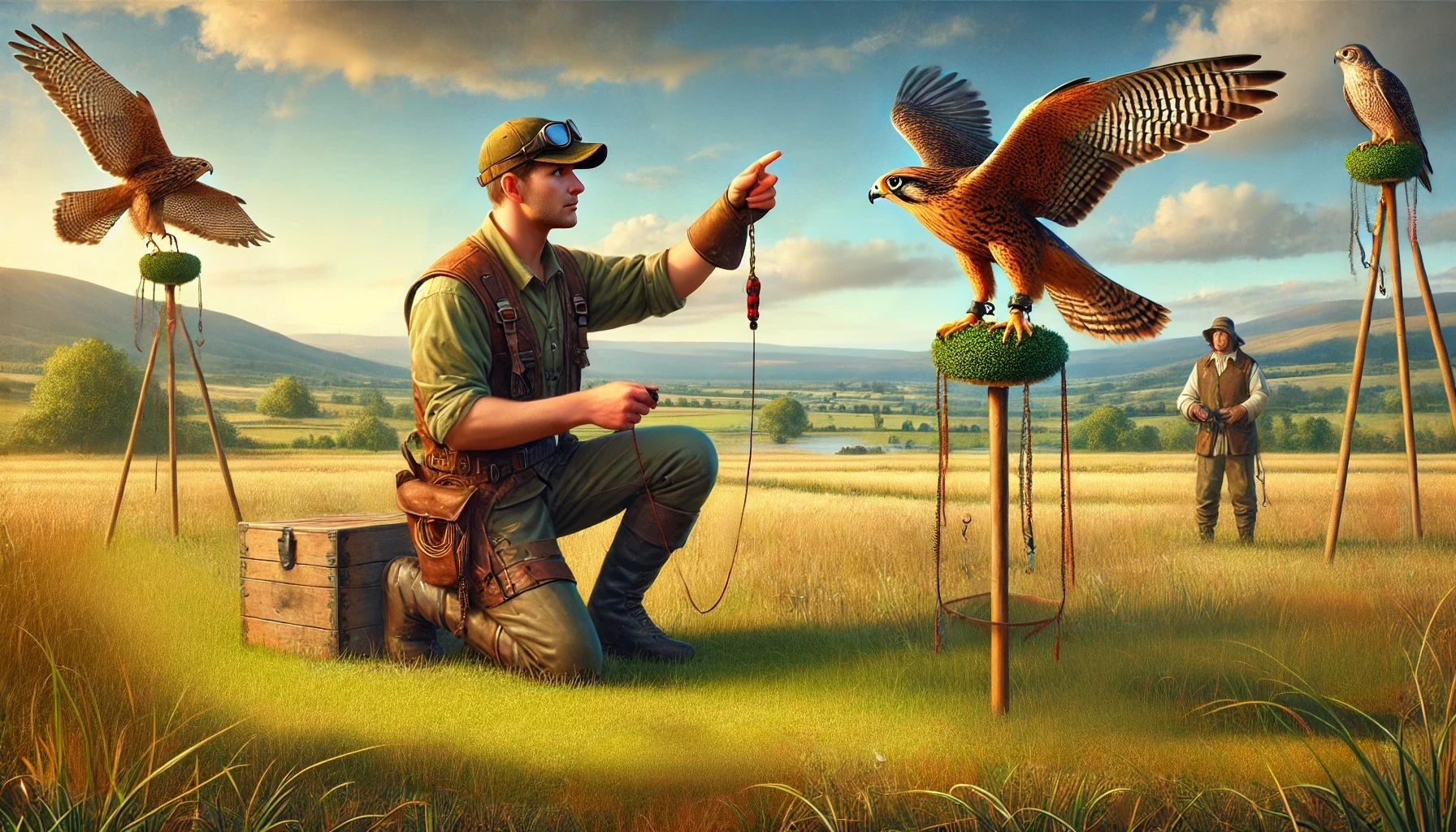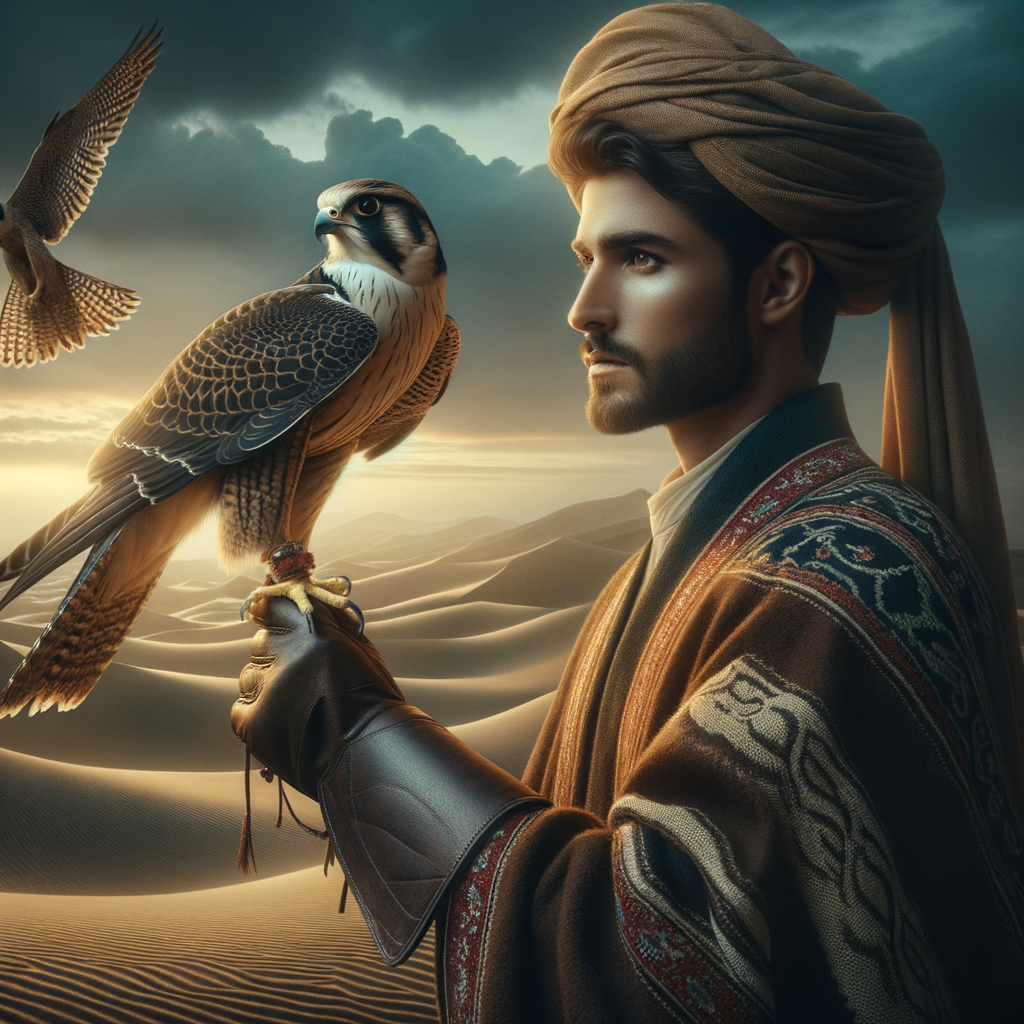Key Training Tasks for Learning Falconry
Understanding Falconry Basics
- Learn the history and traditions of falconry.
- Study the types of birds used in falconry.
- Familiarize yourself with the essential equipment.
Bird Selection and Care
- Know how to choose the right bird for you.
- Learn about the dietary needs of falcons.
- Understand how to maintain your bird’s health and hygiene.
Training Techniques
- Practice bonding with your bird.
- Master the art of patience during training sessions.
- Use positive reinforcement to encourage desired behaviors.
Hunting Skills
- Learn how to work together with your bird while hunting.
- Understand prey behavior and tracking methods.
- Practice safe and ethical hunting practices.
Safety Measures
- Equip yourself with knowledge on handling birds safely.
- Get trained on how to avoid and manage injuries.
- Always follow legal requirements and ethical guidelines.
Developing Your Skills
- Regularly practice and refine your falconry techniques.
- Engage in continuous learning through books and courses.
- Join falconry communities to share knowledge and experiences.
Learning falconry is a rewarding journey full of discovery and connection with nature and magnificent birds. Enjoy the process and respect the tradition!
Mastering the Art of Training-Specific Tasks in Falconry
Top o’ the morning to ya! Imagine training your falcon is like an Irish ceili dance. Each step needs to be precise, but when done correctly, it creates a mesmerizing performance that leaves everyone in awe. At Learn Falconry, we’re here to guide you through every jig and reel of training-specific tasks, ensuring your falcon becomes a skilled, reliable partner in the skies.
Now, you might be wondering why you should keep reading this article. Much like the importance of learning each dance move, understanding and mastering specific tasks in falconry is crucial. Not only does it enhance the bond between you and your feathered friend, but it also ensures their safety and effectiveness during hunting sessions. Plus, we’ve sprinkled some delightful Irish wisdom throughout to keep you smiling and engaged!
So, grab a cup of tea and let’s dive into the steps of training-specific tasks that will transform your training sessions into a captivating routine, just like a perfectly performed ceili dance.
Specialized Falconry Training Techniques
Task-specific falcon training is an essential part of becoming a successful falconer. This type of training focuses on teaching falcons to perform specific tasks effectively, ensuring they excel in their roles. Whether you are training your falcon for hunting, competitions, or shows, having a clear plan and understanding of specialized falconry training techniques is crucial.
At Learn Falconry, we offer a comprehensive guide on task-specific falcon training tailored to meet the unique needs of different breeds. Let’s dive into the details of targeted falcon training.
What is Task-Specific Falcon Training?
Task-specific falcon training involves teaching falcons to perform specific actions with precision. This can include hunting specific prey, flying particular routes, or even returning to the falconer on command. The goal is to ensure that each falcon can execute tasks with efficiency and accuracy, utilizing both its natural instincts and learned behaviors.
The Importance of Specialized Falconry Training
Specialized falconry training not only enhances the skills of the falcon but also strengthens the bond between the falconer and their bird. It creates a structured learning environment where the falcon can thrive. This targeted training approach helps in achieving better outcomes in various falconry activities.
Techniques in Targeted Falcon Training
- Lure Training: This technique involves using a lure to simulate prey. It is a fundamental part of specialized falconry training, helping falcons develop their hunting skills. Learn more about training with lures.
- Recall Training: Here, falcons are trained to return to the falconer when called. This is crucial for both their safety and effective task execution. For details on recall training, see recall training techniques.
- Positive Reinforcement: Using rewards such as treats or praise, falcons learn to associate specific behaviors with positive outcomes. This can be particularly useful in advanced training stages. Find out more about positive reinforcement techniques.
- Hood Training: Ensuring the falcon is comfortable wearing a hood is important for preventing stress during travel and inactivity. Learn about the types of hoods.
- Environmental Adaptation: Training falcons to adapt to various environments helps them perform tasks effectively irrespective of the setting. Check our guide on training in different environments.
Equipment and Tools for Task-Specific Training
Proper equipment plays a vital role in task-specific falcon training. From telemetry for tracking to specialized perches for resting, having the right tools can make a significant difference. Visit our page on falconry equipment for an extensive list of essential gear.
Species-Specific Training Considerations
Different species of falcons have unique traits and behaviors. Training techniques need to be adapted to suit these individual characteristics. For example, Peregrine Falcons are renowned for their speed, which requires a specific type of training different from the techniques used for larger, more robust breeds like Gyrfalcons. Check out our sections on various species, such as Peregrine Falcons and Gyrfalcons.
To become a proficient falconer, it’s essential to understand the nuances of task-specific falcon training. At Learn Falconry, we are dedicated to providing you with all the resources you need to train your falcon effectively.
For more in-depth information on training and other aspects of falconry, don’t forget to explore our comprehensive guides and articles available on our website. Whether you’re a beginner or an advanced falconer, there’s always something new to learn and implement.
Understanding Task-Specific Training in Falconry
Falconry Training Overview
Falconry, the art of training birds of prey to hunt, is a fascinating and complex practice that requires dedication, skill, and patience. Here’s a detailed look into some specific aspects of falconry training in 2024.
Training Period
Falconers typically undergo a two-year apprenticeship to earn the General Class designation. This period allows them to fly a variety of birds of prey, each with unique characteristics and requirements. During these two years, apprentices learn about:
- Bird behavior
- Hunting techniques
- Equipment usage
Bird Selection
Different species of birds are used for hunting specific prey. Here’s a table showing the types of birds and the prey they hunt:
| Bird Species | Prey |
|---|---|
| Red-tailed hawks | Squirrels, rabbits |
| Falcons | Ducks, upland game |
| Goshawks, Cooper’s hawks | Cottontails, squirrels, jackrabbits, upland game, ducks |
| Kestrels | Starlings, house sparrows |
Each bird has specialized training methods tailored to their natural instincts and capabilities.
Training Techniques
Falconers use a variety of techniques to train their birds. These techniques are not only about hunting but also about engaging the birds in different activities, such as:
- Chasing Away Nuisance Birds: Used to protect properties from unwanted birds.
- Agricultural, Commercial, and Municipal Protection: Birds are trained to keep other birds away from crops, buildings, and public spaces.
- Cinematography and Special Events: Trained birds are used in movies, engagement photoshoots, and vow renewals to add a unique touch.
The training methods often involve positive reinforcement, where birds are rewarded with food for performing desired tasks.
Regulations
Falconry is a highly regulated sport in many countries. In the United States, for example, falconers must:
- Obtain permits and licenses
- Complete a minimum of two years of apprenticeship to become a Master falconer
Regulations ensure that falconers are well-equipped to care for their birds and conduct their activities ethically.
Training Locations
The training of falcons and other birds of prey often takes place in diverse environments. Some common training grounds include:
- Woods: Ideal for training birds to hunt small mammals.
- Meadows: Suitable for birds to chase and catch ground-dwelling prey.
- Fields: Perfect for practicing long-distance flights and capturing birds.
The choice of location varies depending on the bird species and the type of prey they are being trained to hunt.
Falcon-Related Models and Training
Reinforcement Learning from Human Feedback (RLHF)
One key method in enhancing falcon training performance is Reinforcement Learning from Human Feedback (RLHF). Human evaluators provide feedback on the quality of a bird’s responses and refine the training process accordingly. This approach helps in training birds to deliver high-quality performance consistently.
Multimodal Models
In modern falconry training, models can handle various inputs, such as visual cues and audio signals, making the training process versatile and adaptable to different scenarios.
Falcon Model Performance
Falcon models, part of the Large Language Models (LLMs) family, show high performance in:
- Search Engines: Used for retrieving relevant information.
- Chatbots: Employed in providing conversational interactions.
Training Data and Integration
- Common Crawl, WebText2, Books1, Books2, and Wikipedia: These sources are pivotal in training models similar to GPT-3, aiding in creating adaptive and intelligent responses.
- Integration with Applications: Falcon models are integrated into various applications to enhance user engagement and functionality.
Evaluation
Falcon models often top the leaderboards for performance and popularity, regularly evaluated for improvements and effectiveness.
By understanding these specific aspects of falconry training, one can appreciate the depth and dedication required in this ancient yet ever-evolving art form. Falconers not only train their birds for hunting but also contribute to conservation efforts and cultural heritage.
Wrapping Up Key Falconry Training Insights
As we’ve explored the fascinating world of falconry training in 2024, several critical points stand out.
First, falconry is a profound and intricate art, requiring dedicated apprenticeships often lasting two years to earn a General Class designation. This training empowers falconers to fly various birds of prey, each species suited to specific types of prey, from red-tailed hawks for squirrels to falcons for ducks.
Additionally, falconers utilize a range of training techniques to prepare their birds, engaging in activities from protecting agricultural land to participating in special events. It’s clear that the meticulous process involves understanding and adapting to diverse environments like woods, meadows, and fields.
Moreover, the regulatory landscape is stringent, with necessary permits and licenses to ensure responsible practice. This structured approach ensures the welfare of the birds and maintains ethical standards within the falconry community.
Falconry, bridging centuries-old traditions and modern techniques, continues to captivate and challenge enthusiasts worldwide. Whether you’re an aspiring falconer or an admirer, the dedication and expertise involved in this ancient sport inspire us to appreciate the unique bond between humans and birds of prey. Embracing these insights can help foster a deeper respect and understanding of this timeless art.



